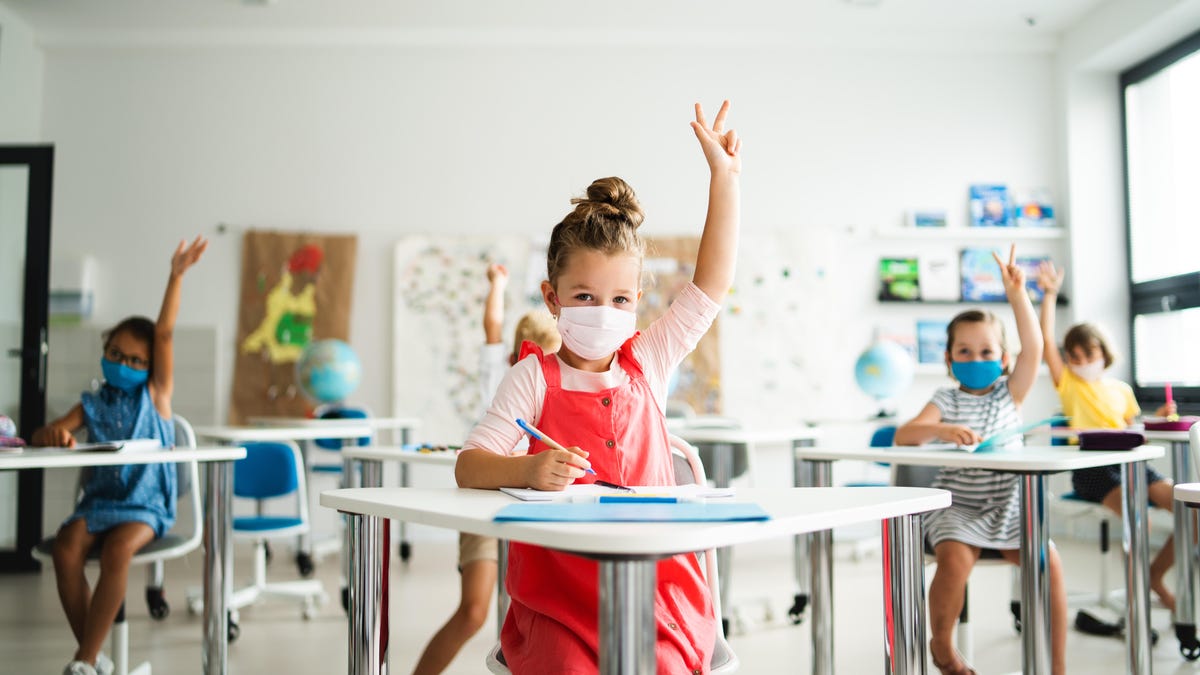In-person learning should be a priority for schools this fall, CDC says
The agency tweaks its guidance to emphasize the importance of classroom learning for K-12 students.

Getting kids back in the classroom, regardless of vaccination status, should be a priority for schools this fall, according to updated guidance from the US Centers for Disease Control and Prevention.
The CDC changed its guidance for schools on Friday, emphasizing that COVID-19 prevention measures "should not exclude students from in-person learning." However, masks should be worn by those age 2 and older who aren't fully vaccinated, students should keep a physical distance of three feet from each other, and hand washing, disinfecting and other prevention measures should be taken to combat the spread of the coronavirus.
If schools can't reopen with the recommended amount of physical distancing, "layered prevention strategies" should be used to protect those not fully vaccinated, but in-person learning should continue, the CDC said. Such strategies can include COVID testing, contact tracing, ensuring proper ventilation and teaching respiratory etiquette.
A significant portion of the K-12 population is unable to get a COVID-19 vaccine right now, since the vaccines are approved only for ages 12 and up. For those who can, the CDC says vaccination should be promoted in schools. Students and families should be given excused absences when getting vaccinated, and for side effects after getting a shot.
In the new guidance, the CDC also highlights the need for localities to monitor COVID-19 transmission and vaccination coverage, and to watch for outbreaks that'll guide schools' decisions on prevention measures.
"This CDC guidance is meant to supplement -- not replace -- any federal, state, local, territorial, or tribal health and safety laws, rules, and regulations with which schools must comply," the CDC said.
Remote versus in-person learning has been a subject of debate throughout the pandemic. Many experts say children benefit from classroom learning, and won't benefit fully from their education if they aren't able to attend school. Additionally, teachers are mandated reporters in most states and are often the first people to spot signs of child abuse. There's also the position that in-person learning could worsen the spread of COVID-19. Though children are unlikely to get severely sick from the coronavirus, they can spread it and bring it home to more-vulnerable family and community members.

